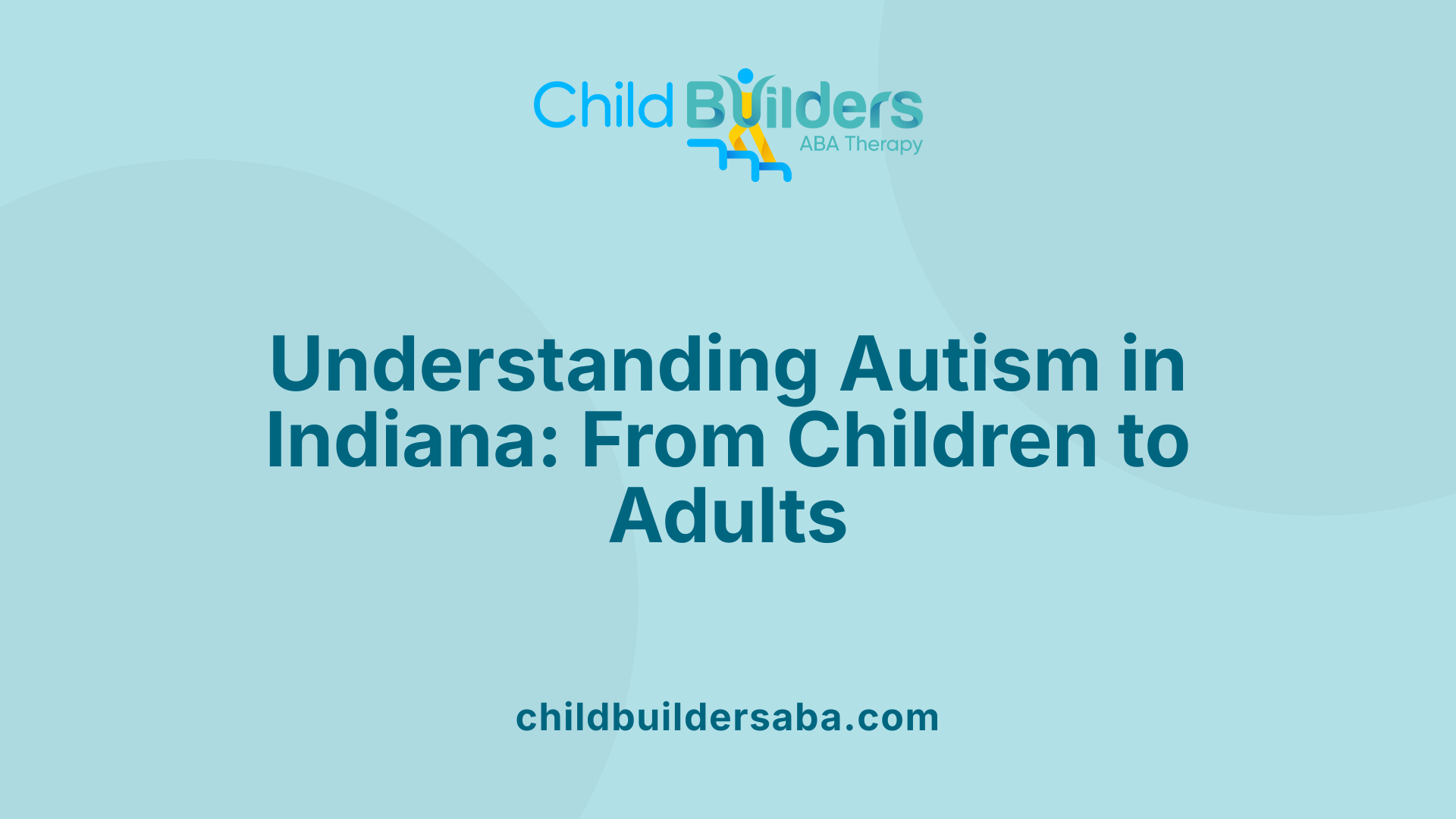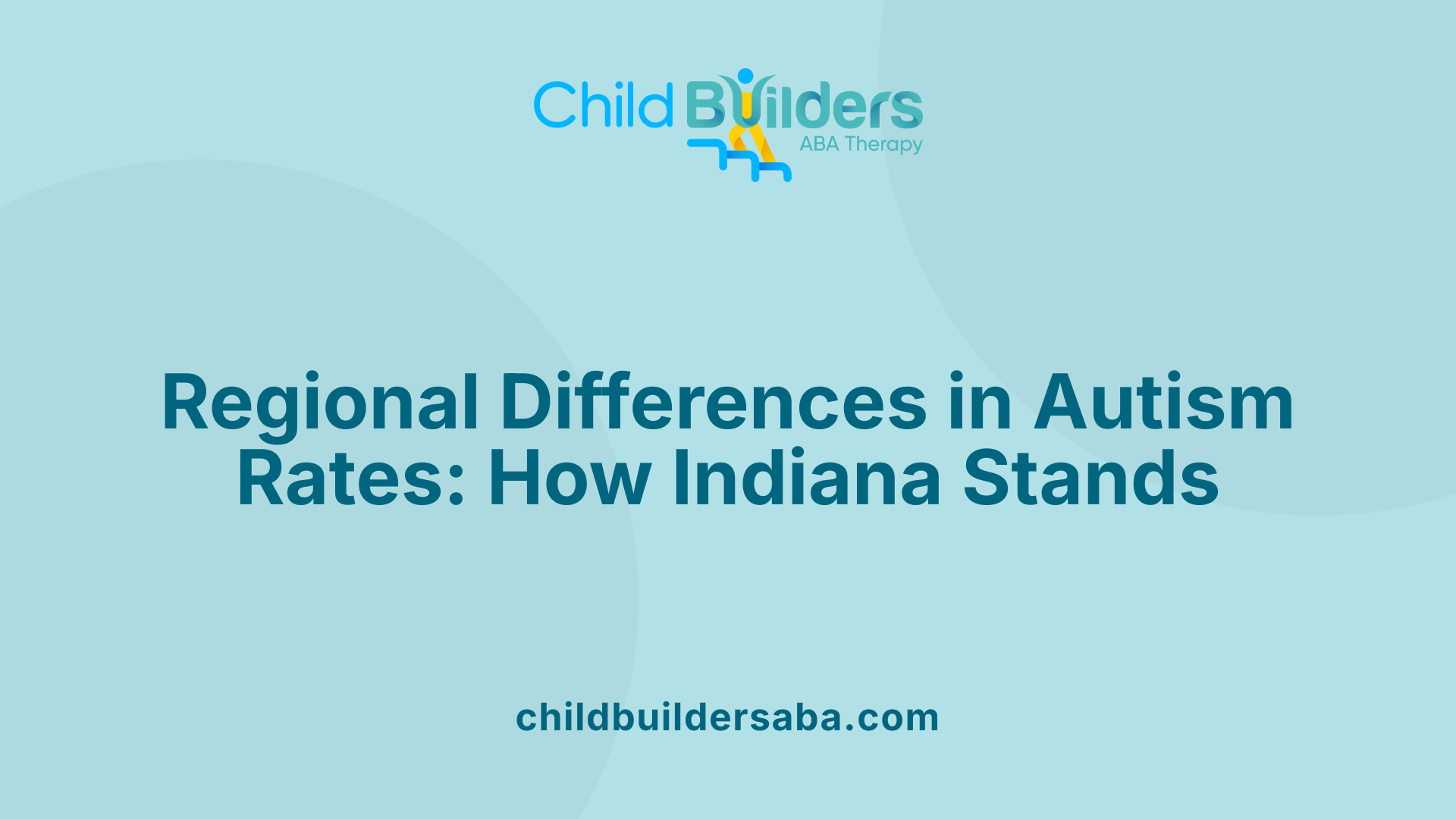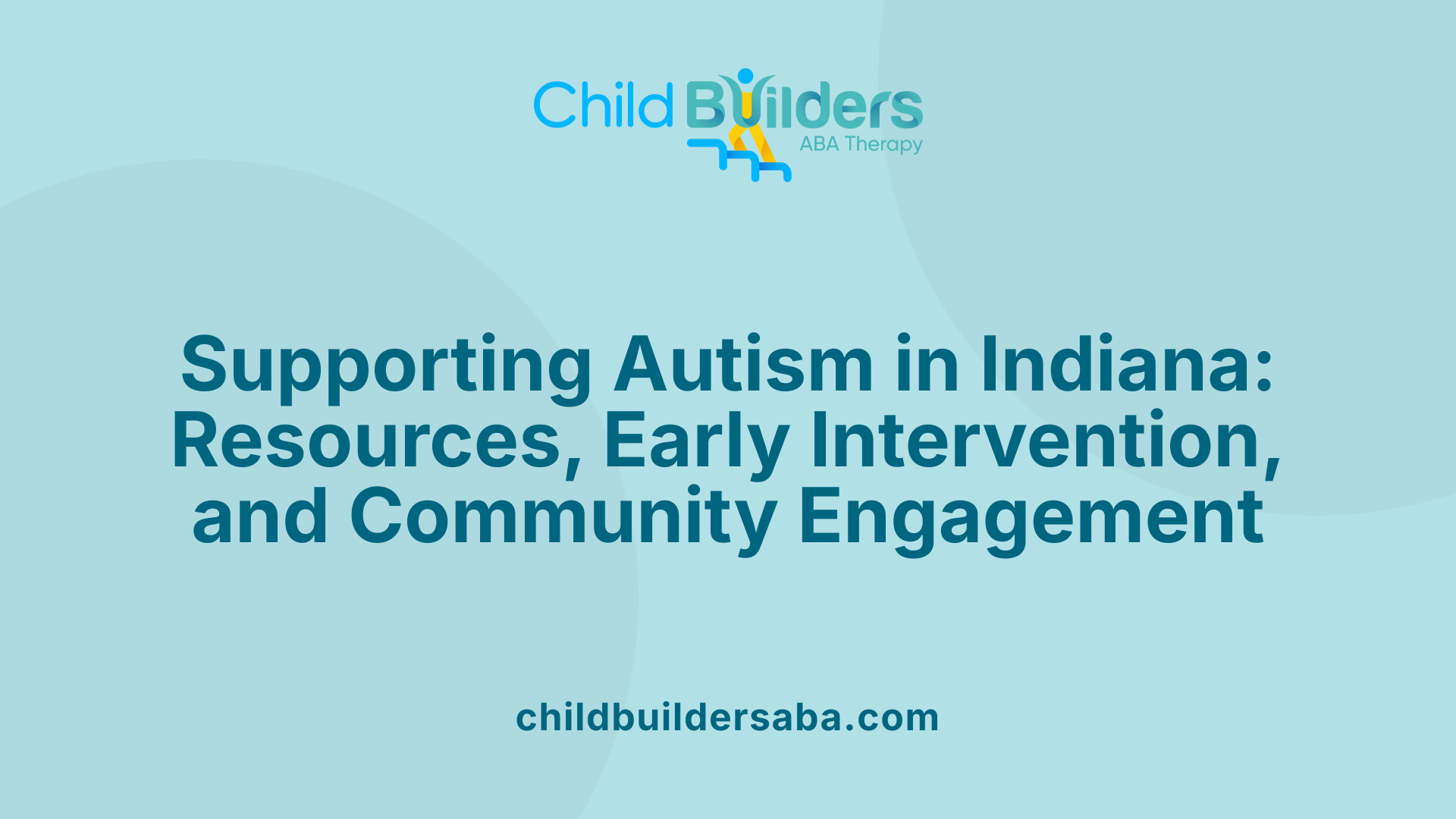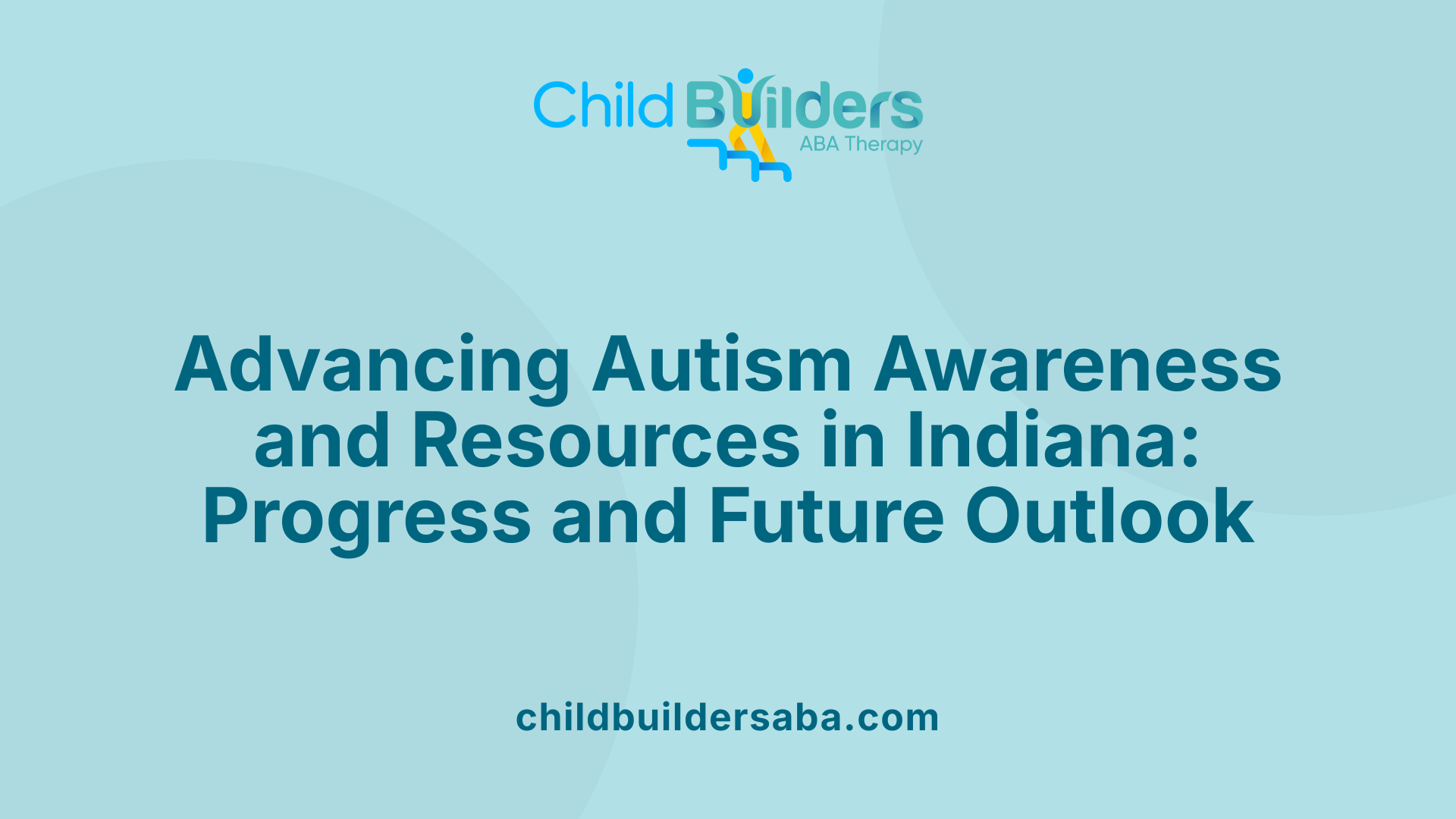Autism Prevalence In Indiana

An Overview of Autism Prevalence in Indiana
Indiana's autism prevalence rates have garnered increasing attention over recent years. While the state exhibits a somewhat lower prevalence compared to national averages, the upward trend in diagnosis rates highlights the importance of understanding regional differences, support systems, and genetic factors associated with Autism Spectrum Disorder (ASD). This article explores how Indiana compares to other regions, the resources available, and the factors contributing to autism prevalence in the state.
Current Autism Prevalence Trends in Indiana

What is the prevalence of autism in Indiana compared to national averages?
In Indiana, the prevalence of autism shows a notable pattern both among children and adults. For children, data from 2017-2018 indicates that approximately 3% of children aged 3-17 have been diagnosed with autism spectrum disorder (ASD). This rate is somewhat higher than the overall U.S. rate of around 3.2% (or 1 in 31 children), with Indiana's figures often landing just below this national average.
Specifically, the CDC's surveillance data from recent years suggests that around 1 in 44 children in Indiana are diagnosed with ASD, slightly lower than the national rate of about 1 in 31 (around 3.2%). While Indiana's child prevalence is a bit below the national average, it has been steadily rising over time. For example, previous estimates from 2018 put Indiana's prevalence at about 1 in 67, which is lower than the current national rate, indicating an upward trend.
When looking at adults, the prevalence continues to mirror the national picture closely. In 2017, approximately 2.24% of Indiana adults aged 18-84 were living with ASD, very similar to the national estimate of 2.21%. This consistency further emphasizes that Indiana's ASD rates align with national prevalence among adults.
How do trends over recent years compare?
Over the past two decades, ASD prevalence has increased substantially across the United States. In 2002, about 6.6 per 1,000 children (roughly 1 in 150) were diagnosed, compared to 32.2 per 1,000 children (around 1 in 31) in 2022. Indiana follows this upward trend, with incremental increases in diagnosis rates.
The higher observed prevalence in Indiana, especially among children, supports the trend of growing awareness, improved detection, and possibly actual increases in autism cases. The rise is consistent across different states and demographic groups, reflecting a nationwide pattern.
| Year | Indiana ASD Prevalence | US Overall Prevalence | Notes |
|---|---|---|---|
| 2017 | 3% (children) | 3.2% | Slightly below national average |
| 2018 | 1 in 67 (children) | 1 in 59 | Previous estimate |
| 2022 | Approx. 3.2% (1 in 31) | 3.2% | Current data |
| 2021 | 1.09% (adults) | 1.7% (national) | Overall adult prevalence |
These figures demonstrate continued growth in ASD diagnoses, with Indiana leading in the percentage of children diagnosed among Midwestern states, indicating a physiological or detection trend that merits ongoing surveillance and research.
Comparison of Indiana with Other U.S. Regions
 Indiana's autism prevalence rate among children is approximately 3%, which is slightly higher than the national average of about 3%, based on CDC data from 2017-2018. This makes Indiana stand out among Midwestern states, where the prevalence ranges from 2.6% in Kentucky to 3.2% in Michigan. In contrast, other states such as Illinois and Ohio have lower percentages of 3.1% and 2.7%, respectively.
Indiana's autism prevalence rate among children is approximately 3%, which is slightly higher than the national average of about 3%, based on CDC data from 2017-2018. This makes Indiana stand out among Midwestern states, where the prevalence ranges from 2.6% in Kentucky to 3.2% in Michigan. In contrast, other states such as Illinois and Ohio have lower percentages of 3.1% and 2.7%, respectively.
When looking at adult prevalence rates, Indiana's estimated rate is around 1.09%, closely aligning with the national estimate of 2.21% and other states. For example, the adult prevalence across the U.S. ranges from 1.97% in Louisiana to 2.42% in Massachusetts, indicating regional differences possibly influenced by healthcare access and diagnostic practices.
In general, prevalence estimates tend to vary across regions due to factors such as demographic diversity, awareness, and reporting standards. Indiana’s rates, although slightly above some neighboring states, reflect a broader trend of increasing autism diagnosis over recent years nationwide. This variation suggests that diagnosis and reporting methods, as well as demographic factors such as racial, ethnic, and socioeconomic considerations, play significant roles across different regions.
Overall, Indiana's autism prevalence, both among children and adults, is comparable to many states but consistently slightly higher in children. The state's higher diagnosis rate among children underscores the importance of ongoing awareness and resource allocation to support affected individuals and their families.
For a comprehensive understanding, the following table summarizes autism prevalence across selected regions:
| Region/State | Child Prevalence | Adult Prevalence | Notes |
|---|---|---|---|
| Indiana | 3% | 1.09% | Slightly above US average in children |
| Massachusetts | ~3.2% | Data not available | Higher childhood prevalence |
| Louisiana | Data not available | 1.97% | Lower adult prevalence |
| Massachusetts | 2.42% | Data not available | Higher adult prevalence |
| California | 4% (exceeds 40 per 1,000 children) | Data not available | Significantly higher |
Understanding these regional differences aids in tailoring public health initiatives and ensuring equitable access to diagnosis and intervention services.
Resources and Support Systems in Indiana

Local organizations and programs
Indiana offers numerous local resources dedicated to supporting individuals with autism and their families. The Autism Society of Indiana is a prominent organization that provides education, advocacy, and community programs specifically aimed at promoting understanding and acceptance of autism. HANDS in Autism® is another vital resource, offering support and training for families and educators to better serve autistic individuals. The Indiana Resource Center for Autism (IRCA) provides information, training, and technical assistance to schools, clinicians, and families to improve services and early intervention efforts. These organizations help create a network of support that ensures autistic individuals receive necessary services throughout their lives.
Early diagnosis and intervention initiatives
Early diagnosis is crucial for effective intervention and support. Indiana has established specialized hubs and programs designed to facilitate prompt evaluations and diagnoses for children suspected of having ASD. These initiatives help identify autism at the earliest possible age, with the average age of diagnosis in the U.S. being around 5 years. Early intervention services, which are accessible through local clinics and state-funded programs, include behavioral therapies, educational support, and family counseling. The emphasis on early diagnosis improves developmental outcomes and enhances quality of life for autistic children.
Community engagement and awareness
Indiana actively promotes community engagement and awareness efforts to foster inclusive environments. Many community events and sensory-friendly activities are designed to welcome autistic individuals and increase social participation. Schools and local organizations organize workshops, awareness campaigns, and inclusive programming to promote acceptance and understanding within communities. These initiatives help reduce stigma and encourage societal support for individuals with autism.
| Aspect | Details | Additional Info |
|---|---|---|
| Main organizations | Autism Society of Indiana, HANDS in Autism®, IRCA | Provide education, advocacy, and resources |
| Diagnosis & early support | Specialized hubs, early intervention programs | Focus on early identification and therapy |
| Community activities | Sensory-friendly events, workshops | Promote inclusion and awareness |
| Supporting policies | Medicaid support, community services | Aim to sustain and enhance services |
Indiana consistently ranks as a supportive environment for autistic individuals, offering essential resources, promoting early diagnosis, and encouraging community involvement to improve quality of life.
Genetic and Environmental Factors Contributing to Autism in Indiana
Autism Spectrum Disorder (ASD) has a complex origin involving both genetic and environmental factors. In Indiana, as across the US, research indicates a strong genetic component in ASD development.
Genetic heritability estimates suggest that between 70% and 90% of autism cases can be attributed to genetic factors. This high percentage highlights the significant role genetics play in the prevalence of ASD in Indiana.
Several genes have been linked to autism, and many are involved in critical brain functions such as chromatin remodeling, signaling pathways, and mitochondrial activity. Notable genes associated with ASD include UBE3A, FMR1, PTEN, SHANK3, and NRXN1. These genes often influence neural development and synaptic functioning.
Genetic alterations like deletions or duplications on specific chromosomes—such as 15q11.2, 16p11.2, and 15q13.3—are also connected to ASD, contributing to its diversity in presentation.
While genetics form a substantial part of understanding autism, environmental factors cannot be ignored. Factors like prenatal exposures, parental age, and environmental toxins may influence ASD risk, especially when interacting with genetic predispositions.
Advances in genetic testing, including chromosomal microarray analysis and exome sequencing, have enhanced understanding of the genetic architecture of ASD. These tools help in diagnosing and tailoring interventions for individuals with autism.
Overall, the combined insights from genetic and environmental research are crucial for developing personalized management strategies and support for children and adults with autism in Indiana.
Improving Awareness and Resources for Autism in Indiana

What is the outlook for autism awareness and resources in Indiana?
Indiana is actively working to improve understanding and access to support for autistic individuals. Public awareness campaigns, such as Autism Awareness Month events, help educate residents about ASD and promote acceptance.
Community involvement plays a key role in fostering inclusive environments. Sensory-friendly activities and community outreach programs aim to bring people together and reduce stigma.
Educational outreach is also a focus. Training programs for teachers and caregivers teach early recognition of ASD signs and effective intervention strategies.
State initiatives are aimed at expanding access to diagnostic services and therapies. Early intervention programs have shown positive outcomes, improving the quality of life for many.
While progress is evident, ongoing efforts are essential to provide equitable resources for all regions of Indiana. The state's commitment to supporting autistic individuals is promising, but continuous work will help ensure comprehensive support and inclusion across the community.
Looking Ahead: Supporting Autism in Indiana
While Indiana's autism prevalence rates are currently below the national averages, the upward trend in diagnosis and increased awareness demonstrate the state’s proactive approach to supporting individuals on the spectrum. Continued investment in early diagnosis, community programs, and genetic research will be vital in addressing the needs of autistic residents. Strengthening support systems and promoting inclusivity remain key objectives for Indiana to ensure that every individual with autism has the opportunity to thrive.
References
- National and State Estimates of Adults with Autism Spectrum Disorder
- Data and Statistics on Autism Spectrum Disorder - CDC
- [PDF] Children & Youth with Special Healthcare Needs (CYSHCN) - IN.gov
- Autism Rates by State 2025 - World Population Review
- Autism statistics and facts | Autism Speaks
- National and State Estimates of Adults with Autism Spectrum Disorder
- Data and Statistics on Autism Spectrum Disorder - CDC





































































































